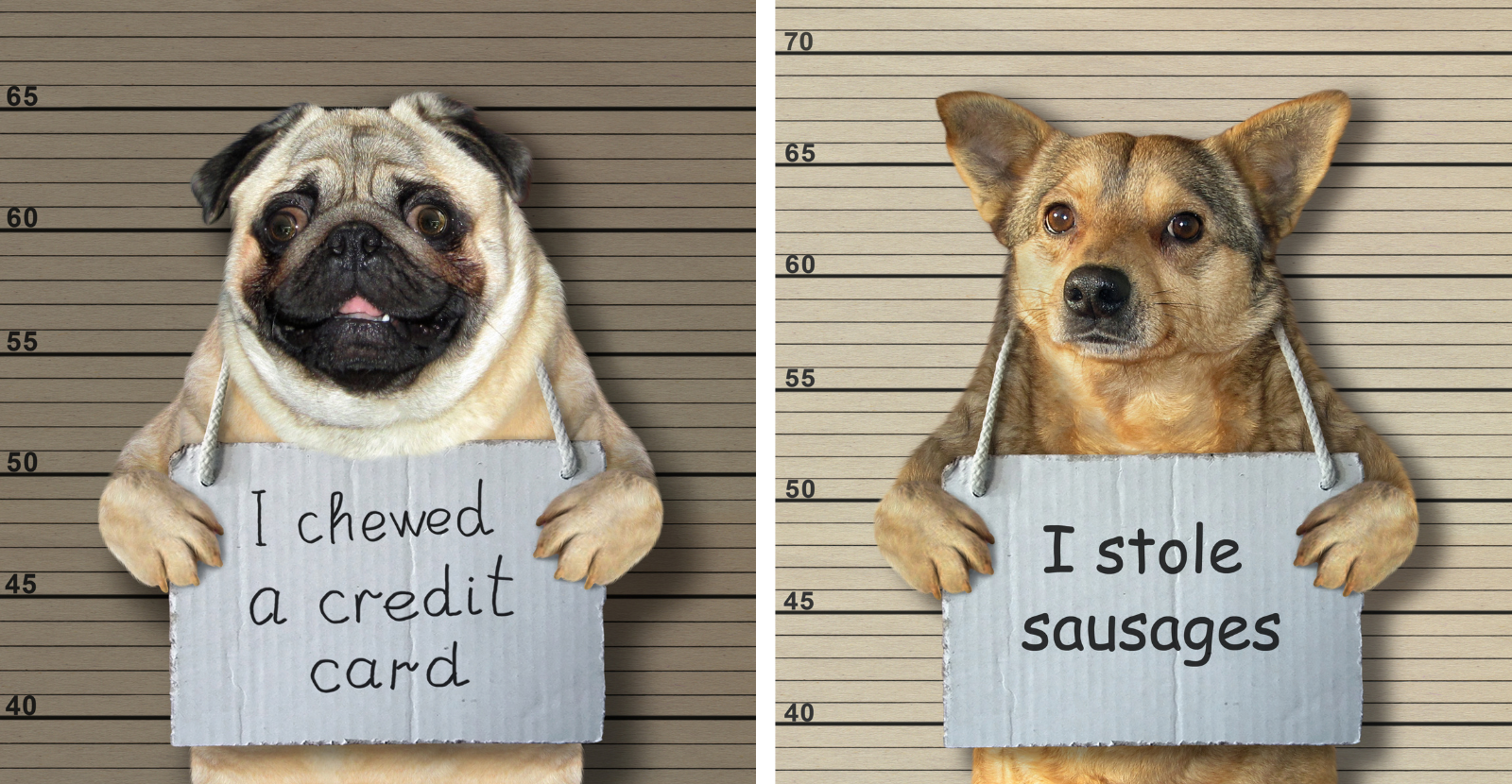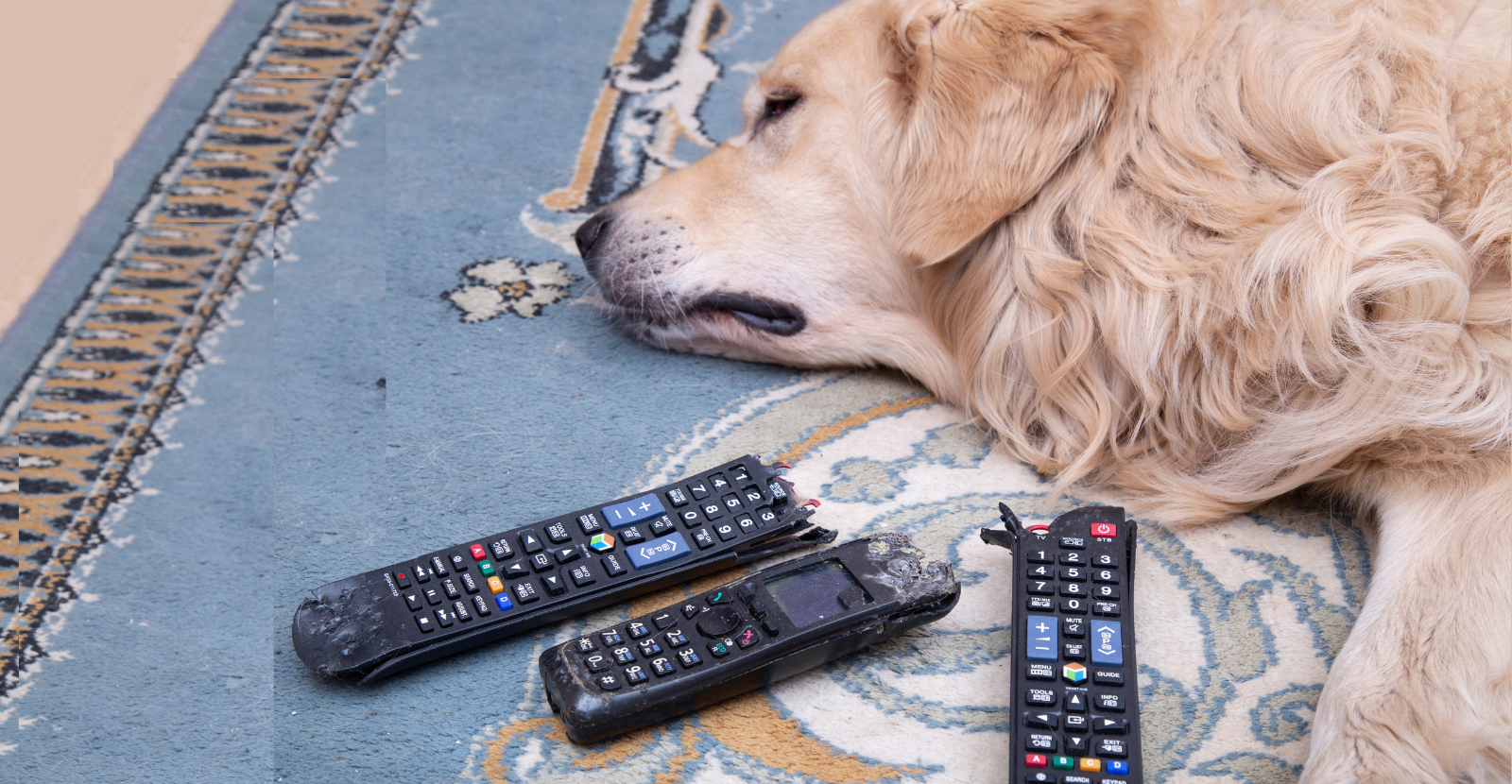Do you find yourself paying attention to your furry friends when they are up to their usual antics? If you’re tempted to Google “how to fix your dog’s bad habits,” you’re not alone – we’ve all been there! But before we dive into the doggy drama, let’s make one thing clear: harsh punishment won’t make it go away. Dogs are masters at hiding their less-than-good behavior, and yelling “bad dog” is as effective as barking at the moon.
According to one study, almost 30% of young puppies have to be put down because of undesirable behavior. Sadly the leading dog crime is aggression. But there is some good news: bad behavior can be corrected. In this article, we’ll sniff out the top dog bad habits and guide you through fixing them!
8 Bad Habits You Need to Watch Out for in Your Dog
Here is a list of 8 common bad habits that you should pay attention to in your dog and prevent them:
1. Improper chewing
Chewing is a natural behavior for dogs. Exploring their environment is not only enjoyable but also helps to relieve boredom. Chewing also serves the purpose of cleaning your dog’s teeth. However, it is important to teach your dog what things are acceptable for chewing.
Dogs can also have chewing seizures because they can chew on bottles of toxic laundry detergent. Please do not punish your dog for inappropriate chewing. Give your pets a variety of chew toys to play with. Please encourage them to engage with these toys by offering treats and guiding them toward them. Praise them when they chew on their toys so they know it’s an appropriate behavior.
As a puppy owner, be sure to check your puppy for teething. A dog’s gums can become inflamed during teething and cause it to chew inappropriately. Whenever possible, buy toys specifically designed for teething puppies.
2. Digging Too Much
Digging is a way for dogs to relieve their build-up of energy or find a scent. Either way, this behavior can get worse if your dog destroys your property. You may see them digging to hide things like toys or bones.
You can get rid of this bad behavior in your dog by walking them and spending time with them. You may want to set aside a sandbox for digging to break this habit. Tell your dog that only certain areas are suitable for digging, and train them accordingly. If you want to make that area more enjoyable for your pet, add treats and toys.
3. Bark When The Doorbell Rings
There are many reasons why dogs bark at the doorbell. Their bark may be a reaction to visitors, or it may be a guard dog response. When dogs bark, some even believe that they are training you to open the door by barking. A good way to prevent dogs from barking at doorbells is to reward them for alternative behaviors, such as lying on a nearby rug while waiting for the door to open.
4. Obtaining Food by Begging
Does your dog always ask for food when it comes to the table? At first the behavior may seem good, but later it can turn bad. Any behavior that brings a reward to a dog makes them more likely to repeat it. They will probably ask for food on the table again if you give it to them once.
Whenever your dog eats at the dining table, you should avoid feeding him anything. Keep everyone in the family by giving them too. He will stop begging for food when he understands that there is nothing he can do. Dogs can also be trained to sleep at dinner time. The second option is to have his meal time coincide with yours so you can enjoy your meals in peace.

5. Pulling on The Leash
Dogs acquire all the behaviors discussed above because of their past experiences with rewards. Pulling the cord is no exception. The dog considers pulling on your leash as a reward if you move in the direction they direct you.
In other words, if you want to restrain your dog pulling on the rope, you must prevent them from advancing until you want them. Stop your dog from pulling on the leash, and be firm with him. It’s not a good idea to allow your dog to get ahead.
You should walk in the opposite direction if your pet is not relaxed. This exercise may seem simple, but it requires a lot of patience and practice. If you own a Greyhound, we recommend purchasing one Greyhound harness instead of a regular dog collar because it gives you a better grip on your dog and allows you to control it.
6. Peeing at Home
This one is the most disgusting. Peeing on objects is common for dogs to mark territory or communicate with canine friends. Take your dog outside immediately if you catch him urinating indoors (or even preparing to do so). When he chooses to pee outside, reward him and praise him. Use an enzymatic cleaner to deodorize pee marks to prevent frequent urination.
7. Separation Anxiety
Separation anxiety is the main destructive behavior that disturbs the peace of the dog owner. Symptoms of anxiety commonly seen in dogs include growling, barking, urinating, and defecating. Dogs may exhibit other destructive behaviors when owners are not around. As a result of separation anxiety, the following symptoms occur:
- When your dog sees you getting ready to leave, he becomes anxious
- Misbehavior 15 to 45 minutes after the owner leaves the house
- Your dog will continue to follow you around
To treat separation anxiety, training is required, as well as behavior modification and desensitization techniques. Some veterinarians may even prescribe medications. You should leave your dog alone for five minutes during the desensitization process. After they get used to being on their own, you can gradually increase the duration.
8. Getting up and Jumping
Dogs usually jump, especially when they are around their owners. While this may seem cute at first, others may find it irritating. The dog should not jump on strangers or anyone they see in public.
A puppy jumps up to meet its mother on both legs. Because they treat you as a parent, they do the same to you. When your puppy is excited, he may exhibit this behavior. You can use many methods to stop your dog from jumping, but sometimes they just work.
A reward can be offered for jumping, as this is an attention-seeking behavior. You can avoid this unwanted behavior by walking away from your dog or turning away from your body and ignoring him. Ignoring your dog is not the behavior they are looking for, and therefore they will learn that is not what they have to do to get your attention. It’s important to reward your dog when he understands and relaxes or stays on all 4 feet the next time he sees you.
Remember…
Dogs may be creatures of habit, but that doesn’t mean their bad behavior is set in stone! Just like us, they are quick to jump on anything that brings them joy or excitement. That’s where you step in with a little guidance, patience, and love, to steer them toward a more positive path.
We’ve uncovered the mystery behind 8 common dog behaviors and shared some valuable insights on how to stop them. So, if you happen to see your furry friend indulging in one of these mischievous activities, don’t worry! You have the knowledge to deal with the issue head on.
Remember, this is a journey, not a sprint. With consistency and kindness, you can help your puppy become the good companion you’ve always dreamed of. So, let’s embrace the adventure of dog ownership with open arms, and together, let’s create a healthy relationship between people and their four-legged friends!
This guest post was contributed by Arslan Hassan.



